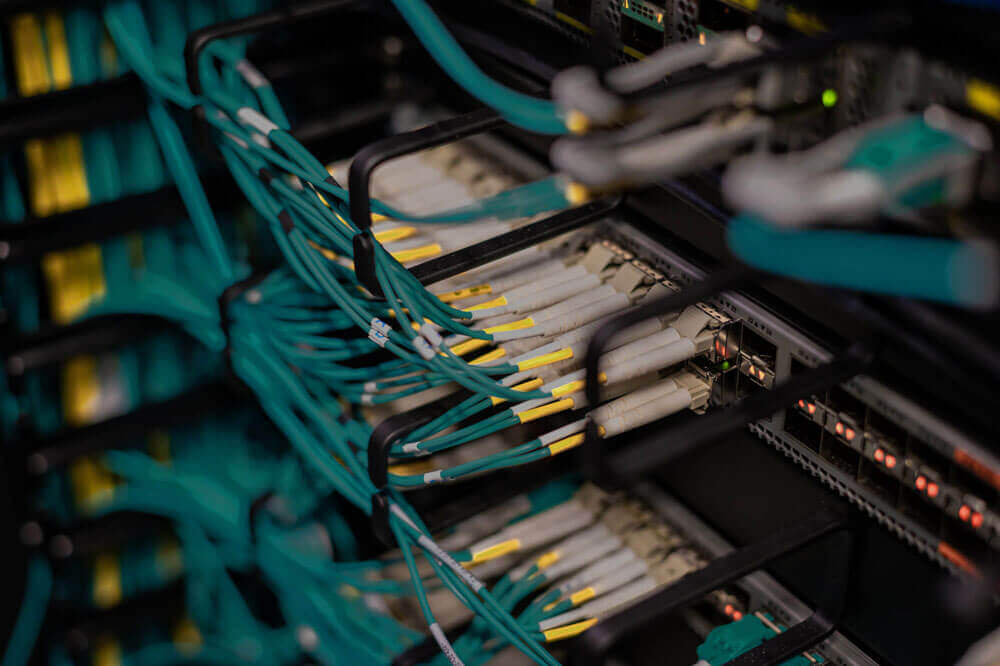
Advanced Network Visibility Solutions
Challenges
in Modern
Landscape
Organizations and individuals have a greater and increasing dependency on IT services which need faster and high-performance networks to deliver them. This has changed the modern landscape of networks to put more pressure on them for performance, security and reliability. The increased complexity makes it more challenging to manage and secure them.
Network Visibility Solutions are essential components of today’s networks and IT initiatives because they help to improve:
![]() Network service uptime
Network service uptime![]() Quality of service
Quality of service![]() Network security posture
Network security posture
![]() Operational flexibility
Operational flexibility![]() Return on Investment (ROI)
Return on Investment (ROI) ![]() Reduce costs and network tool sprawl
Reduce costs and network tool sprawl
Network Visibility Solutions for your Organization
Solutions for
Service Providers
Cubro’s solutions help Service Providers to maximize revenue and manage capex and opex in an increasingly challenging market. Increased competition from incumbent and new market entrants, continual advances in technology and increasing market demands are just a few of the problems that successful Service Providers have to address.

Our solutions for 3G/4G/5G NSA and SA networks, virtual networks, and fixed line and wireless voice and data networks improve network service uptime, quality of service, security posture and fast problem identification and resolution. These solutions enhance Customer Experience, competitive advantage and ARPU.
Solutions for Enterprises

Cubro’s solutions help small to large Enterprises maintain competitive advantage by improving business agility, resilience, and ability to adapt to change quickly.
The acceleration to digitisation, remote working and collaboration services increase network performance and security risks by introducing new network monitoring and security ‘blind spots’ and network security attack vectors.
Our solutions remove network ‘blind spots’ from a public and private cloud, virtual and on-premise networks while automatically bypassing out-of-service network and security devices. The result is improved security posture, network performance and availability, business continuity, capacity and network planning, and regulatory compliance.
Solutions for
Data Centers
Whether an Enterprise resource or a Service Provider business, Cubro’s solutions help Data Centres to reliably, cost effectively and sustainably meet their users’ increasing performance and traffic demands.

Users’ needs for increasingly higher performance, secure and agile IT services requires DCs to balance delivery of services across multiple, evolving, multi-vendor technology network platforms and domains. These include cloud, virtual, 10/40/100/400G links, new technologies such as containers and microservice. Managing modern-day DCs also include securing East/West as well as North/South network traffic, with concurrently managing capacity, local and remote support, network availability and performance, network upgrades, environmental resources and costs.
Our solutions provide full network visibility for network monitoring and security tools of remote and central locations in cloud, virtual and on-premise network environments so that they can effectively manage multi-vendor, multi-technology network performance, reliability, security and capacity. At the same time, Cubro’s solutions improve sustainability by minimizing the traffic required by the monitoring and security tools to reduce their cost, extend their lifespan and ROI. The solutions also reduce tool sprawl, while mitigating disparate network, security and tool interface speeds to reduce and manage network and tool upgrades.
Solutions for Government Organisations

Cubro helps Government organizations to provide better public services at lower cost by delivering sustainable solutions for ‘digital first’ IT strategies while increasing successful project outcomes.
The move to digitisation increases the risk to successful IT project outcomes by introducing new network monitoring and security ‘blind spots’ and network attack vectors while increasing the dependency of public services and internal organizational processes on IT services.
Our solutions remove network ‘blind spots’ from public and private cloud, virtual and on-premise networks while automatically bypassing out-of-service network and security devices.
This improves network performance and availability, security posture, business continuity, capacity and network planning, and regulatory compliance. Our low TCO and integrated multi-capability solutions approach reduces costs and environmental resources.
Network Visibility Solution Benefits
Solutions from layer 1 to layer 7
Our products include physical and virtual network TAPs, Advanced Network Packet Brokers, Bypass Switches, Network Probes, Cloud Switches, and orchestrated Software Defined Visibility solutions that:
- Remove network monitoring and security ‘blind spots’
- Reduce unnecessary network traffic sent to network tools
- Generate and enrich metadata
- Increase network availability
- Mitigate speed disparities between network tools and network interfaces
They can be deployed for a wide range of use cases to improve network monitoring and network security posture. Cubro’s products scale from low cost, entry-level products, suitable for small branch offices or home workers, through to high-performance products for Data Centres and Service Providers.
Gain network visibility for better network performance
Cubro’s philosophy of providing the best ‘feature to price’ ratio products in the market alongside a simple and transparent pricing structure and unique technical capabilities, means that our customers enjoy solutions that:
- Deliver low Total Cost of Ownership (TCO) and high ROI
- Are easy to budget for, design, deploy and maintain
- Fully meet their technical needs
- Address use cases that were previously not possible
Contact us now to learn more about how we can help you.

Our newsletter provides thought leadership content about the industry. It is concise and has interesting content to keep you updated with what’s new at Cubro and in the industry. You can unsubscribe anytime with a single click.
This site is protected by reCAPTCHA and the Google Privacy Policy and Terms of Service apply.
